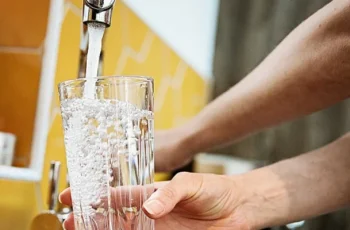Salt, valued for its disinfecting properties since antiquity, effectively combats bacteria and microorganisms through osmosis, dehydrating and disrupting microbial cells. This natural disinfectant, unlike synthetic chemicals, leaves no toxic residues, making it a safer and eco-friendly option.

Mechanism of Action:
Salt’s disinfectant action stems from osmosis, drawing water out of microbial cells, leading to their destruction. It also disrupts essential cellular functions by interfering with enzyme activity and altering pH levels.
Historical Significance:
Ancient Egyptians used salt for embalming, while Greeks and Romans applied it to wounds. Throughout the Middle Ages, it preserved food, preventing foodborne illnesses. Traditional cultures employed saltwater rinses for wounds and sprinkled salt to ward off disease.
Contemporary Applications:
In modern medicine, saline solutions clean wounds and hydrate tissues. Salt-based gargles soothe sore throats, and salt-infused air therapy supports respiratory health. Household cleaning utilizes salt with vinegar, lemon juice, or baking soda to disinfect surfaces and deodorize carpets. Food preservation, through curing, brining, and pickling, relies on salt to inhibit bacterial growth. Electrolyzed saltwater produces hypochlorous acid for water purification, sanitizing drinking water and medical equipment.
Comparison with Synthetic Disinfectants:
Salt acts gradually, dehydrating microbes over time, unlike immediate sterilization by bleach or alcohol. While chemical disinfectants are powerful, they can be harmful and produce toxic residues. Salt, non-toxic and biodegradable, is preferred for routine cleaning, though high-risk settings may require stronger disinfectants.
Limitations and Enhancements:
Salt requires high concentrations for effectiveness, and some bacteria (halophiles) can survive in salty conditions. It may not eliminate all viruses or deeply embedded pathogens. Combining salt with vinegar, hydrogen peroxide, or essential oils enhances its disinfectant power.
Environmental Benefits:
Salt’s minimal environmental impact is a significant advantage. Unlike synthetic chemicals, it doesn’t release toxic byproducts, reducing pollution. Salt-based cleaning promotes sustainability and minimizes harmful waste. Its affordability and availability make it an accessible alternative.
Future Technologies:
Research is advancing salt-based antimicrobial coatings for medical devices, food packaging, and household surfaces. Salt-infused air purification systems, like halotherapy, are gaining traction for respiratory health. Salt-based water filtration systems are also being developed for disaster relief.
Important considerations about Salt and the environment:
It is very important to note that while salt is a naturally occurring substance, that does not mean that the over abundance of it in our environment is completely benign. Increased salt in the enviroment, caused by such things as road salting, and increased water salinization, does cause negative enviornmental impacts. With increased concentrations of salt in fresh water, it becomes toxic to aquatic life, and can make drinking water sources unusable. It can also increase the rate that metals, and radioactive materials can leech from surrounding soils. So care must be taken when any product, including salt, is used in large quantities.

Conclusion:
Salt’s disinfectant properties, recognized for millennia, remain essential today. Its ability to inhibit microbial growth makes it a natural alternative. From medicine and homes to food and water purification, salt maintains hygiene and safety. Ongoing scientific advancements will further expand its use in disinfection technologies, contributing to a healthier world.



